Choosing the best chicken coop bedding can be like picking the perfect pillow- comfort, cleanliness, and functionality all come into play. Let’s take a look at the different coop bedding options and explore the pros and cons of each.
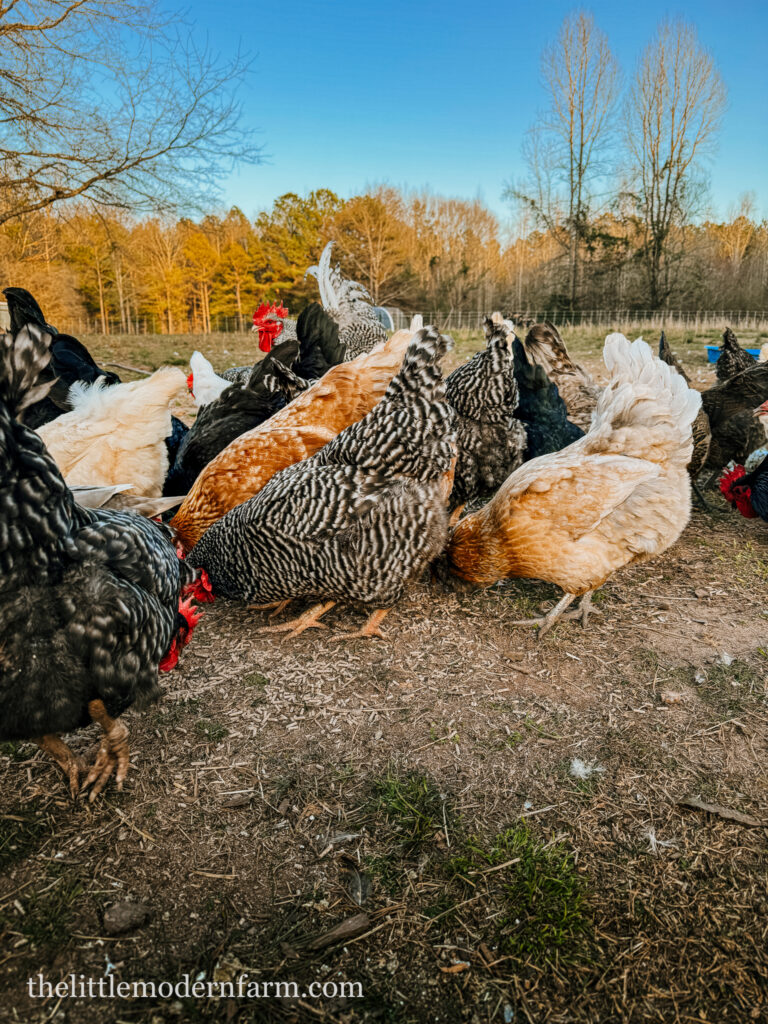
The best chicken coop bedding for your flock will depend on several different factors. There are a lot of options available with pros and cons to each of them. Here’s a list of common chicken coop bedding materials to help you make an informed decision.
Best Chicken Coop Bedding
Straw:
Straw is a classic bedding for the chicken coop. It’s natural, readily available, and provides decent insulation. Chickens love to peck and scratch around in it, and it’s quite affordable.
Straw is also great during the winter. Its hollow interior holds warm air and helps to heat the coop without electricity.
However, straw can get moldy if it gets wet, and it needs frequent replacing to maintain cleanliness. It’s also not very absorbent if you have a moist coop.
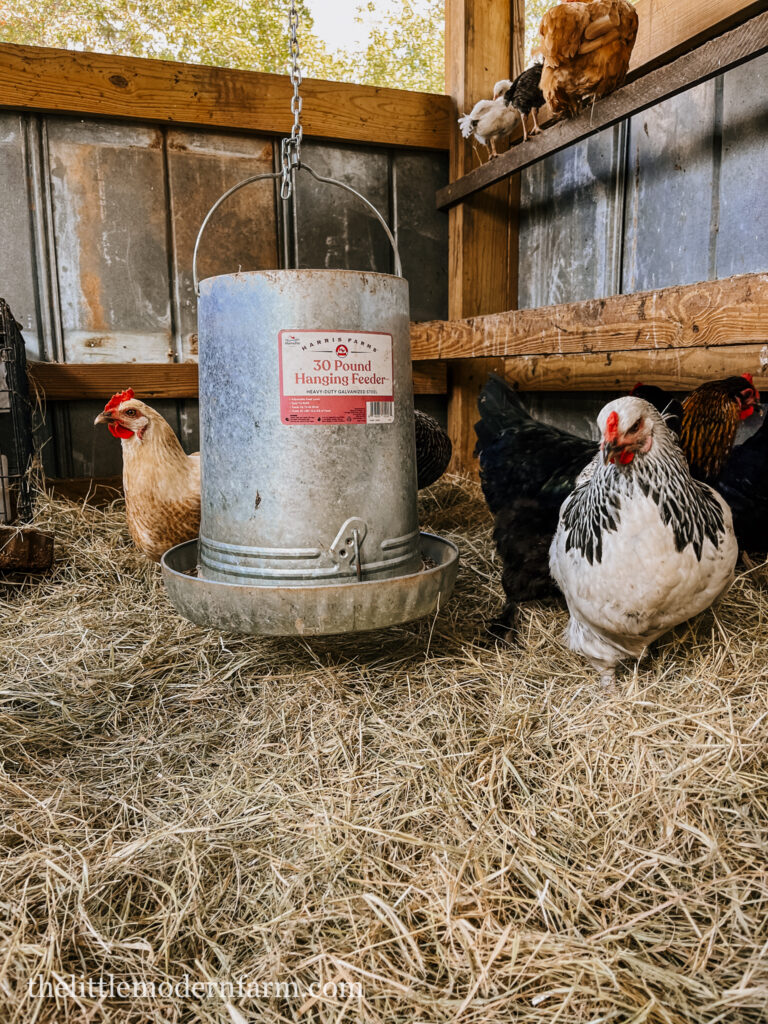
Pelletized Bedding:
Pelletized bedding, made from recycled paper or other natural materials, is super absorbent and can control odors well. It’s also dust-free, which is great for both chickens and their caretakers with sensitivities.
I love using pelletized bedding in my chicken run during the rainy seasons. It’s great at absorbing moisture and creating a dryer floor for the flock. It’s also a natural material that doesn’t tend to mold or create dust.
It’s great for the flock’s feet as well. Other types of bedding can injure their feet, but pelletized bedding breaks down creating a soft surface for them to walk on.
The bedding will also break down nicely into the soil.
On the downside, it tends to be more expensive than other options. A 40lb bag will cost you $7-12. That can be expensive if you have a large coop or run.
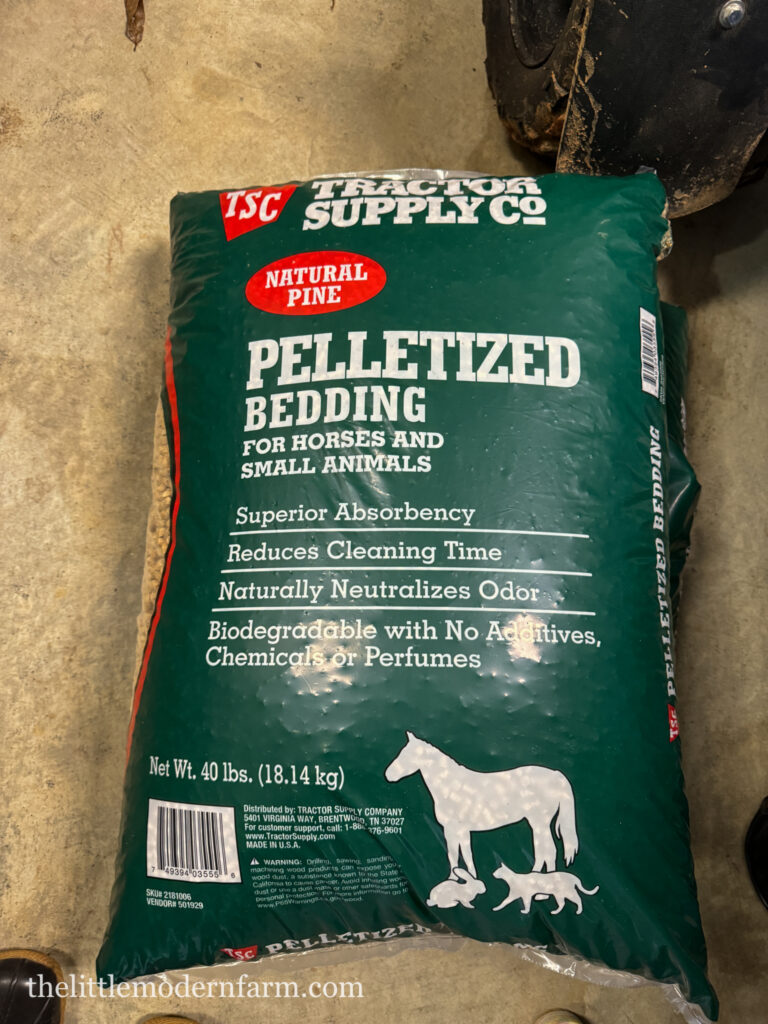
Pine Shavings:
Pine shavings are another popular choice. They’re absorbent, easy to clean, and provide good insulation. Plus, they have a pleasant aroma that can help mask coop odors.
Shavings are also inexpensive, and a great option for small birds like chicks. You can find them fairly easily which makes them a popular choice for a lot of chicken keepers.
They break down easily and serve as a great bottom layer for the deep litter method.
However, be cautious about using cedar shavings, as they can be harmful to chickens’ respiratory systems.
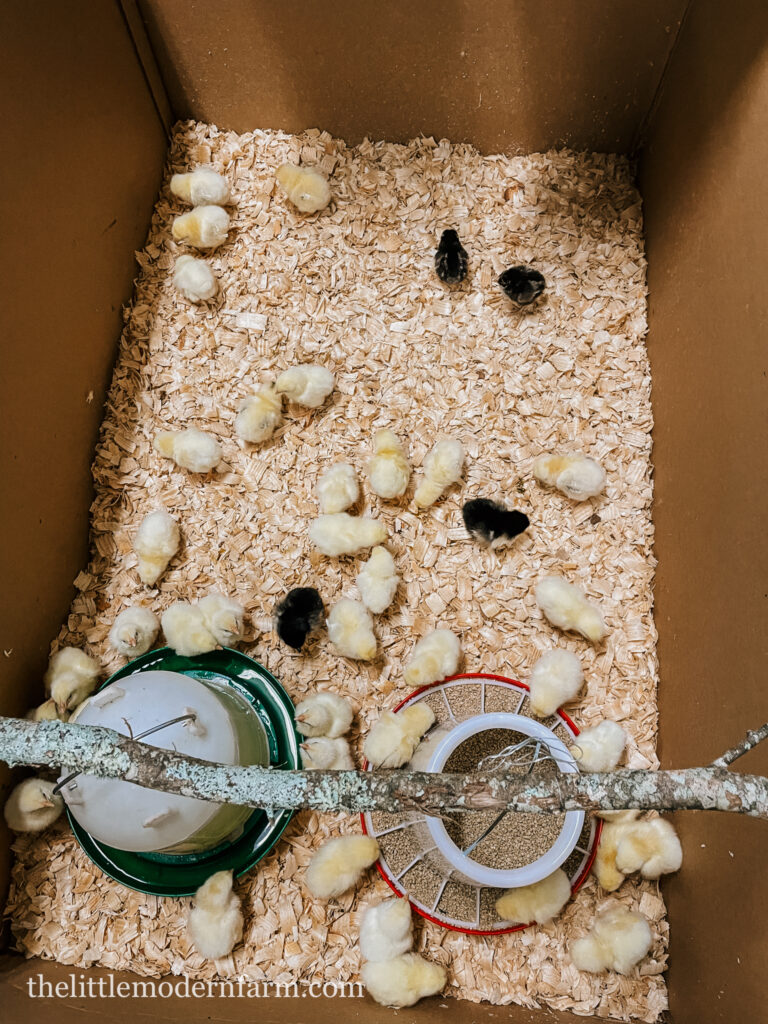
Sand:
Sand is gaining popularity as a chicken coop bedding. It’s excellent for drainage and easy to clean—just sift out the droppings regularly. Sand also discourages pests like mites and lice.
Sand is great for chicken’s feet as well. It doesn’t pose a risk for injury like other bedding options. It’s also easy to find in most areas.
The type of sand you choose matters. You don’t want sand that’s very fine. The dust will cause respiratory problems in your chickens. A thicker sand is better. Very course sand also isn’t a good choice. It’s harder to sift and will end up more like mud. You want something in between course and fine.
Sand doesn’t provide much insulation, so it may not be a good idea in colder climates. It’s also a lot of maintenance. It needs to be raked and then sifted regularly. It’s honestly too much for me and my homestead.
Hay:
Hay is cozy and comfortable, and chickens love to nestle in it. It’s also readily available in many areas. It also breaks down well if you’re using a deep litter method.
It’s not as insulating as straw but would be better than sand in a cooler climate
However, like straw, it can get moldy when wet and needs to be frequently replacement. Hay can be messy and may attract pests if not properly managed.
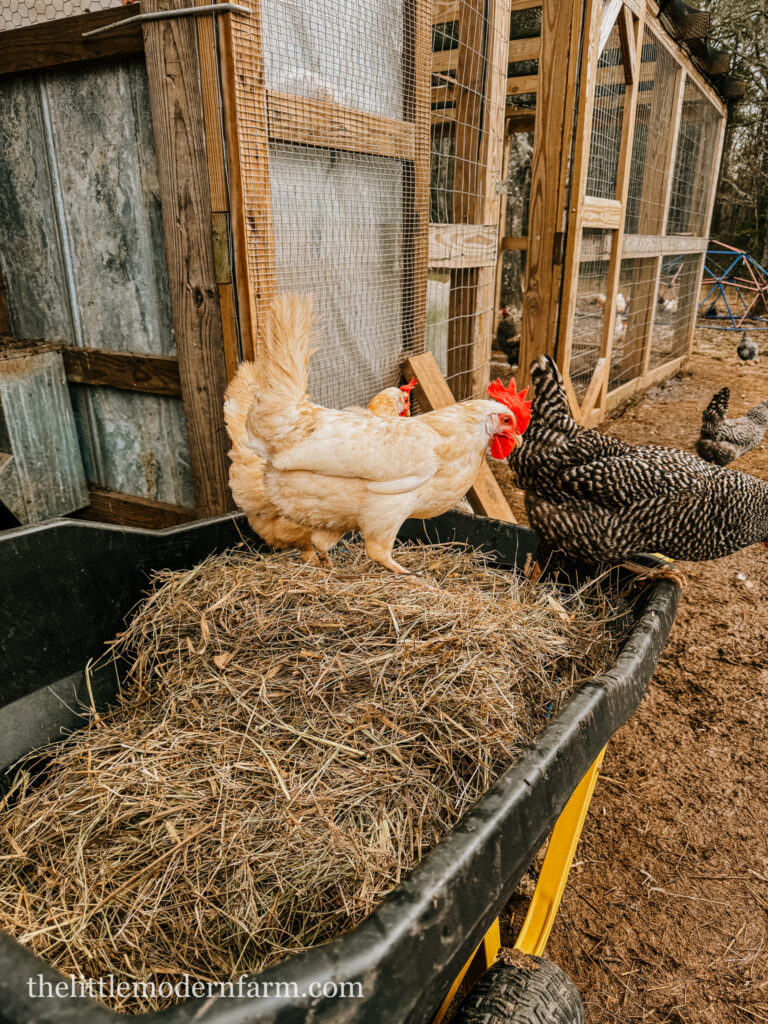
Pebble Stones:
Some chicken keepers opt for pebble stones as bedding. They’re durable, long-lasting, and great for drainage. Pebbles can also deter pests and make cleaning a breeze.
They’re great for moist climates or a consistently wet run. You won’t have to worry about mud building up and creating a mess.
However, they offer little comfort for chickens to nestle in, and it might not be the most natural choice for them. They’re also expensive, and have a bit of maintenance to keep up. You’ll need to rinse the pebbles frequently for sanitation. Pebbles also aren’t great for the chicken’s feet.
In summary, each bedding option has its pros and cons. Straw and hay are natural and affordable but require frequent replacement and can get moldy. Pelletized bedding is absorbent and odor-controlling but can be pricey. Pine shavings are clean and aromatic but may pose respiratory risks with certain wood types. Sand is easy to clean but lacks insulation. Pebble stones are durable and low maintenance but not very cozy.
Ultimately, the best bedding for your chicken coop depends on your climate, budget, and personal preferences. Whichever option you choose, regular cleaning and maintenance are key to keeping your coop safe for your flock.
Helpful Tips
- Keep it Clean: Regularly clean the coop bedding to ensure a healthy space for your chickens. Remove soiled bedding and droppings regularly to prevent the buildup of bacteria and ammonia.
- Choose Absorbent Bedding: Choose absorbent bedding materials to help control moisture and odors in the coop. Absorbent bedding materials like pine shavings, pelletized bedding, or sand can help keep the coop dry and comfortable for your chickens.
- Provide Adequate Insulation: Consider the climate in your area when selecting bedding materials. Bedding that provides insulation, such as straw or pine shavings, can help keep your chickens warm in colder temperatures.
- Avoid Harmful Substances: Some bedding materials that may contain harmful substances or chemicals. Avoid cedar shavings, as they can be harmful to chickens’ respiratory systems. Choose untreated pine shavings or other natural bedding options instead.
- Monitor for Mold and Pests: Keep an eye out for mold and pests in the coop bedding. Moldy bedding can pose health risks to your chickens, while pests like mites and lice can cause health issues. Replace bedding quickly if you notice any signs of mold or pests.
- Provide Comfortable Nesting Areas: Make sure that your chickens have comfortable nesting areas with bedding for laying eggs. Soft, cozy bedding like hay or straw can provide a comfortable nest for your hens.
- Use Deep Litter Method: Consider using the deep litter method, where fresh bedding is added on top of existing bedding regularly. This allows beneficial microorganisms to break down waste and reduce odors naturally, while also providing insulation for your chickens.
Remember, happy chickens make for happy egg producers!
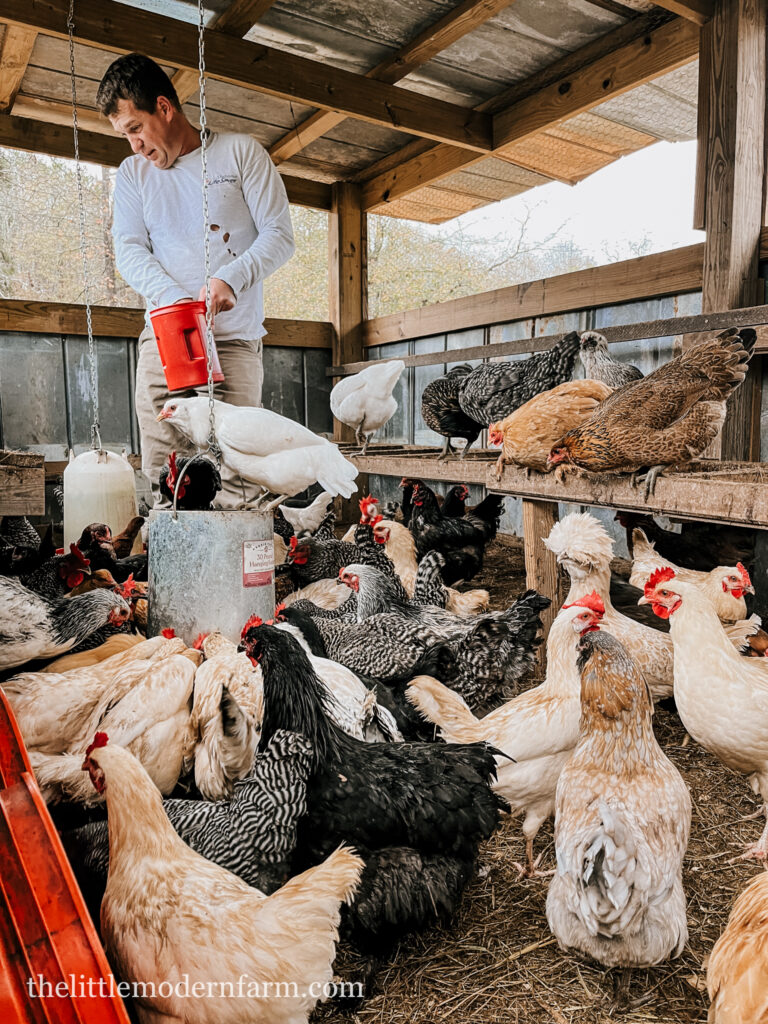
Coop Bedding FAQs
What is the best bedding material for a chicken coop?
The best bedding material depends on factors like climate, availability, and personal preference. Common choices are straw, pine shavings, pelletized bedding, sand, and hay.
How often should I change the bedding in my chicken coop?
Bedding should be changed regularly to maintain cleanliness and prevent the buildup of bacteria and odors. The frequency of bedding changes depends on things like the number of chickens, coop size, and type of bedding used, but generally, you should change bedding every month or as needed. I
I use a deep litter method and only change mine a few times a year.
Can I use newspaper or cardboard as bedding for my chicken coop?
While newspaper or cardboard can be used as bedding, they are not great choices because they are not very absorbent and can become soggy and messy fast. It’s better to use bedding specifically designed for chicken coops, such as straw, pine shavings, or pelletized bedding.
Is cedar bedding safe for chickens?
Cedar bedding is not good for chickens because it contains aromatic oils that can be harmful to their respiratory systems. You should avoid cedar bedding and use untreated pine shavings or other safe bedding instead.
Can I compost used chicken coop bedding?
Yes, used chicken coop bedding can be composted, but it’s important to compost it properly to ensure that any pathogens are broken down. It’s also a good idea to monitor the compost temperature to ensure that it reaches levels high enough to kill pathogens.
How can I prevent mold and pests in my chicken coop bedding?
To prevent mold, make sure you have proper ventilation in the coop and keep bedding dry. Regularly clean and replace bedding as needed to prevent mold growth. To deter pests like mites and lice, use bedding materials that are clean and dry. Regular cleaning and maintenance can help keep mold and pests at bay.
Is it necessary to use bedding material in the chicken nesting boxes?
Using bedding material in nesting boxes is not strictly necessary, but it gives your girls a comfortable and clean environment to lay eggs. Bedding materials like straw or hay can help cushion eggs and absorb any mess, making nesting boxes more inviting for your chickens.
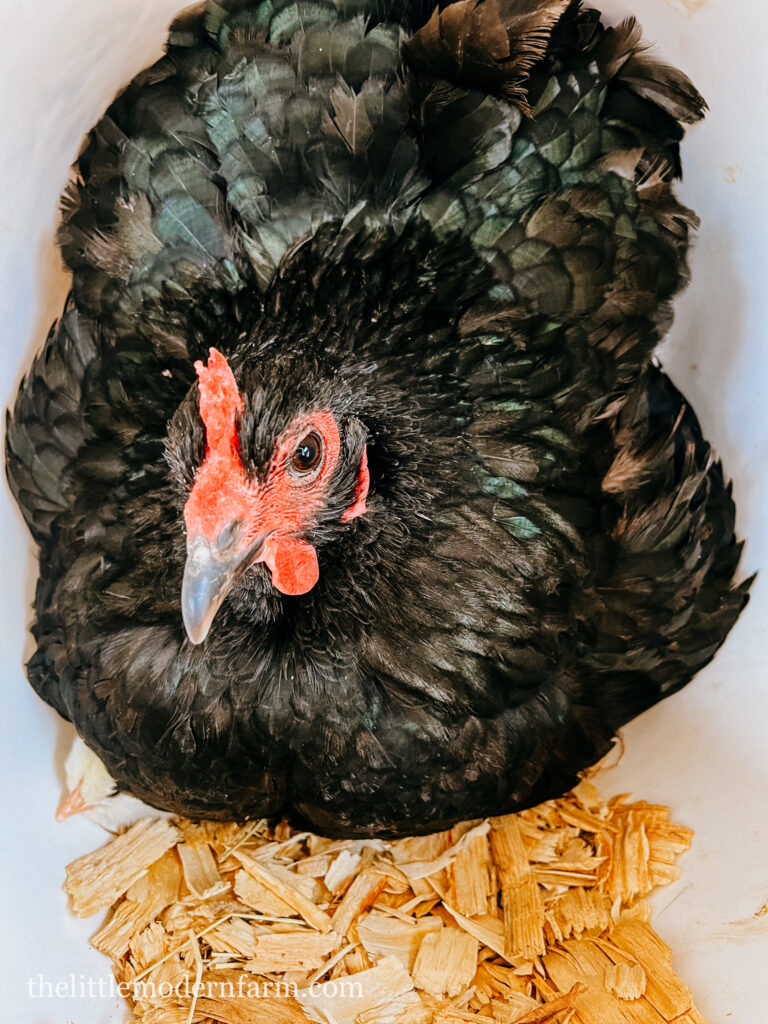
Final Thoughts
Each bedding option offers its own set of advantages and disadvantages, catering to different preferences, climates, and management practices. It’s important for chicken keepers to consider things like absorbency, comfort, insulation, availability, and maintenance requirements when choosing the best bedding for their coop. Experimenting with different options and watching how your chickens respond can help you find the perfect fit for your flock’s’ comfort and well-being.
If you enjoyed this post, please share it! Thanks for visiting my farm.
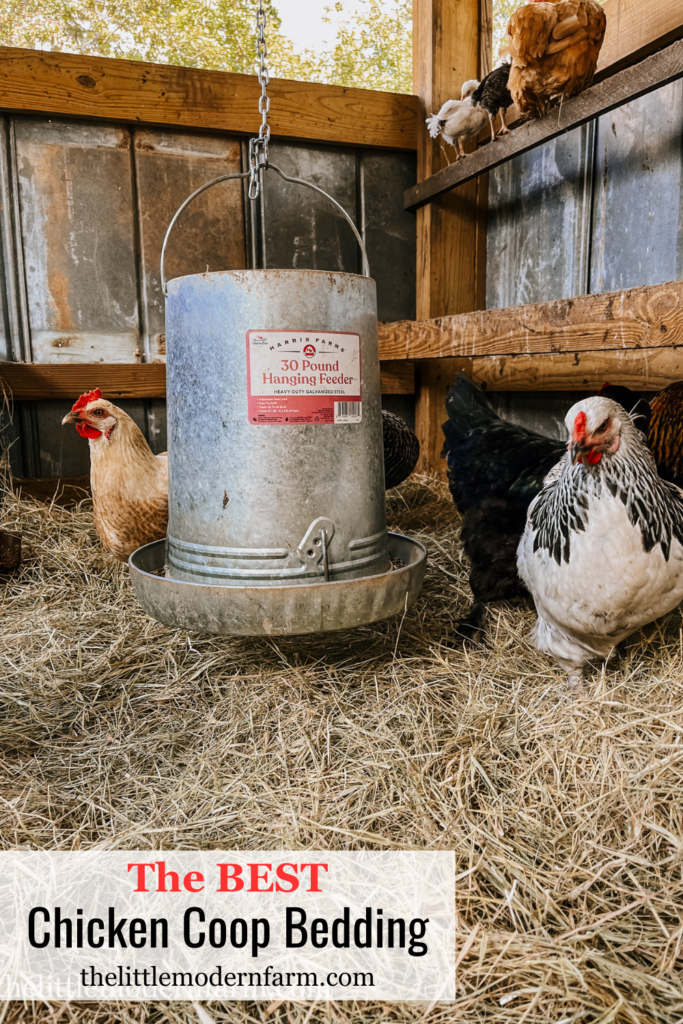
[…] The best bedding for chickens […]